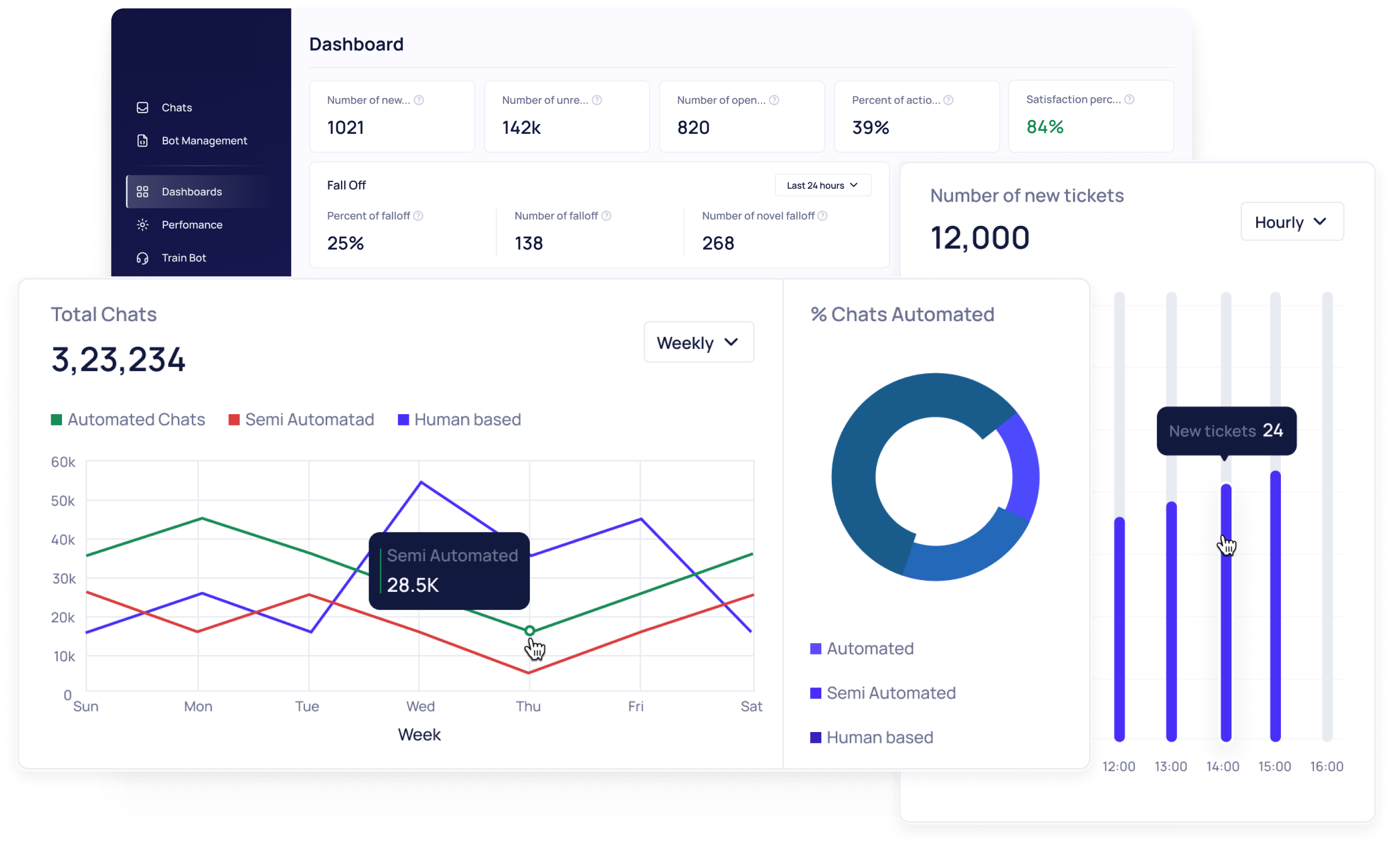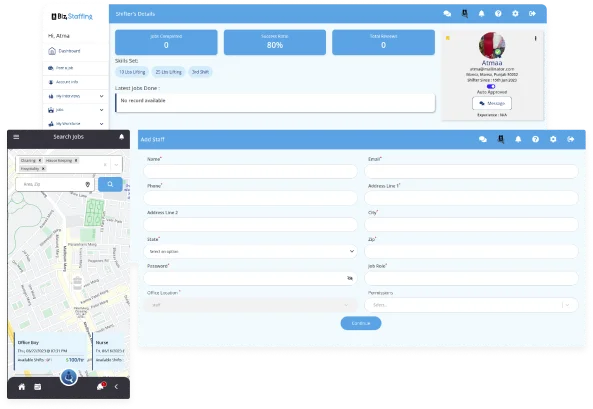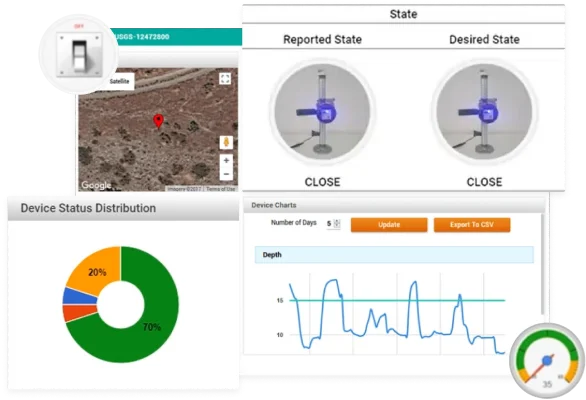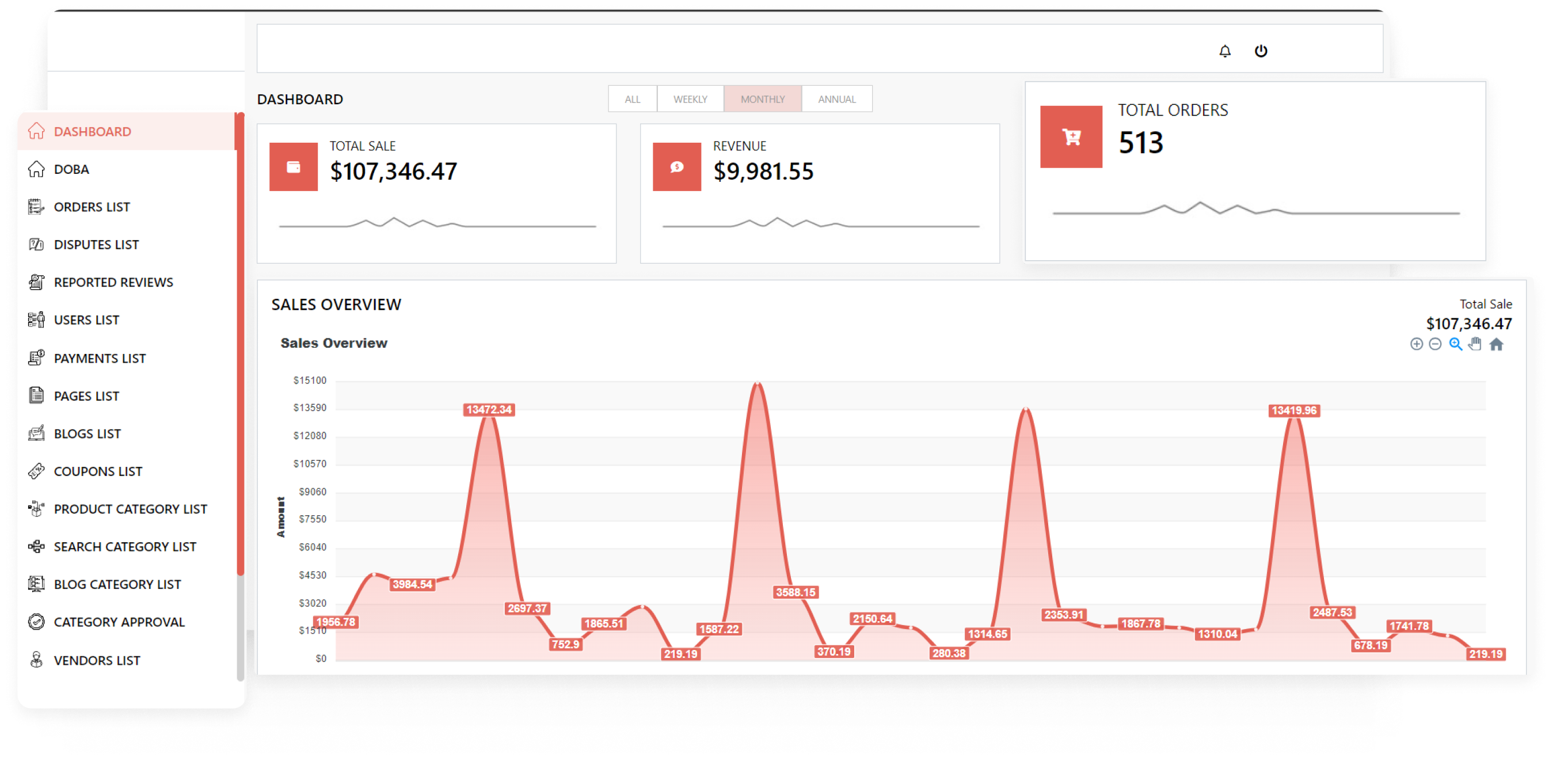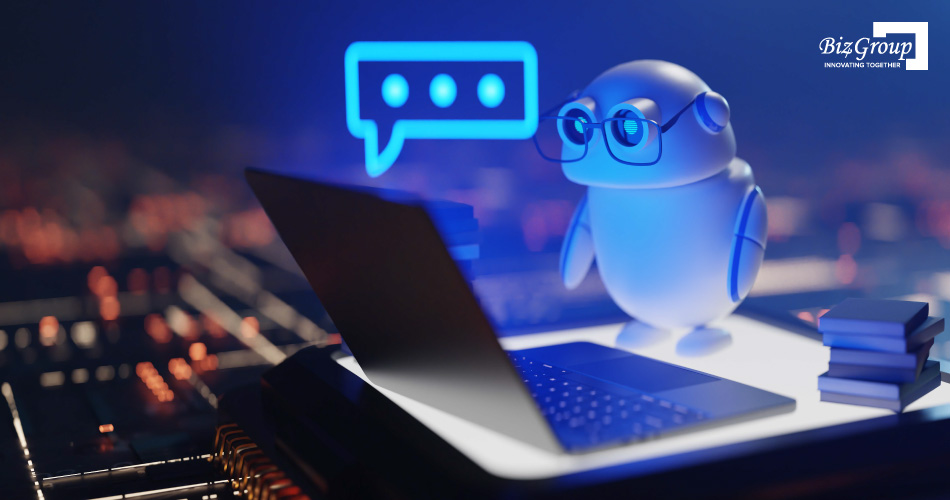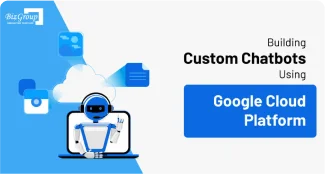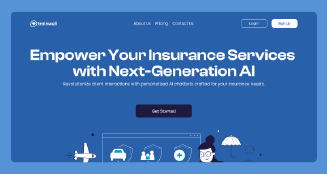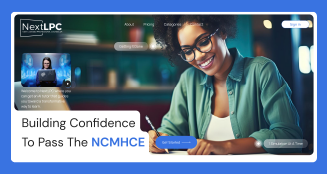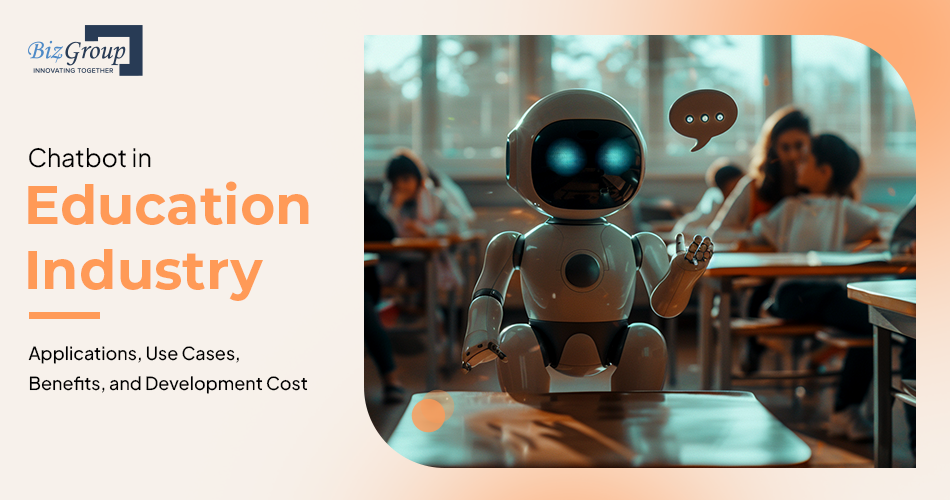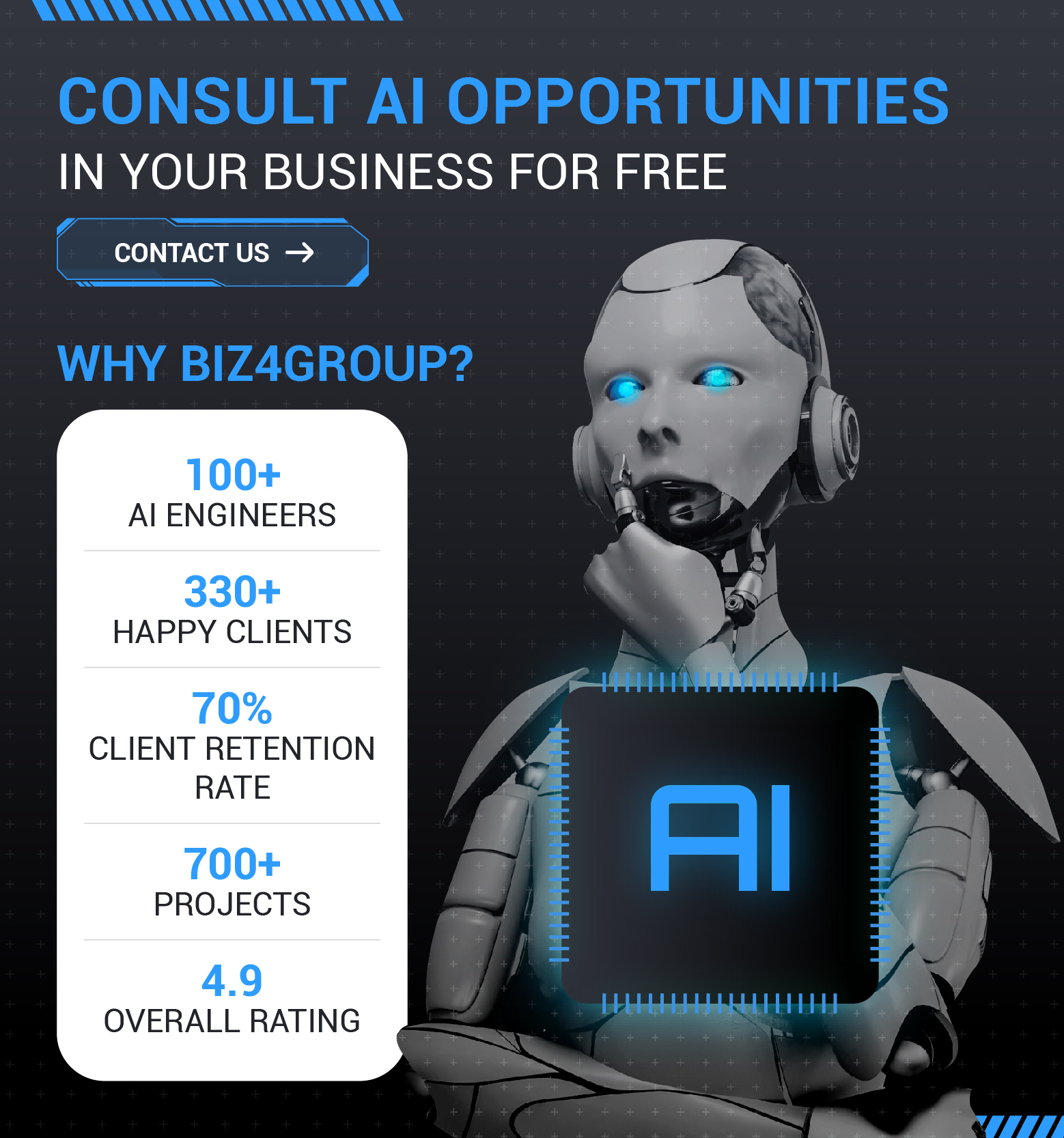Chatbot in Education Industry: Applications, Use Cases, Benefits, and Development Cost
As per the survey conducted by the Forbes Advisor in October 2023, more than half of the teachers who participated in the survey believed that AI created a positive effect on the teaching and learning process. Additionally, 60% percent of educators have started using AI in their classrooms to promote better understanding.
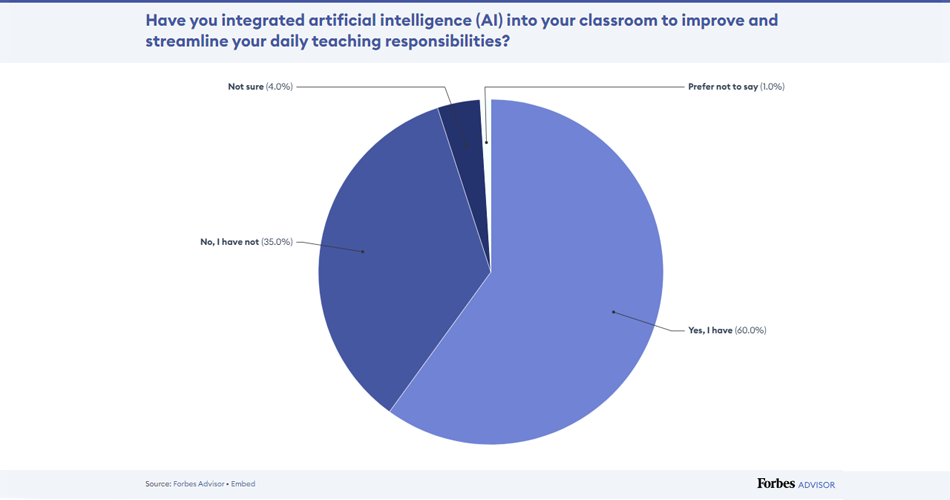 Source “Forbes Advisor”
Source “Forbes Advisor”
The introduction of AI text-based systems in education is changing the way we perceive teaching and administrative activities, providing students, educators, and administrative people with a simple and efficient way of getting information and services.
This article explores how chatbots are in education as well as how they are multifunctional, giving lots of examples, cases, pros and cons, and room for development and money spent on it.
Via AI eLearning development solutions, the institutions of education could enjoy the power of AI learning chatbots to facilitate enriching learning conditions and operational efficiency. It doesn't matter whether it is by using simplified access processes or personalized learning assistance, the advent of chatbot in education will lead the educational sector to new heights of inclusivity and accessibility.
Chatbot Applications in Education Industry
The remarkable thing about the application of chatbots at all levels of education is that they focus on providing prospects to the students for the enhancement of their new learning experiences.
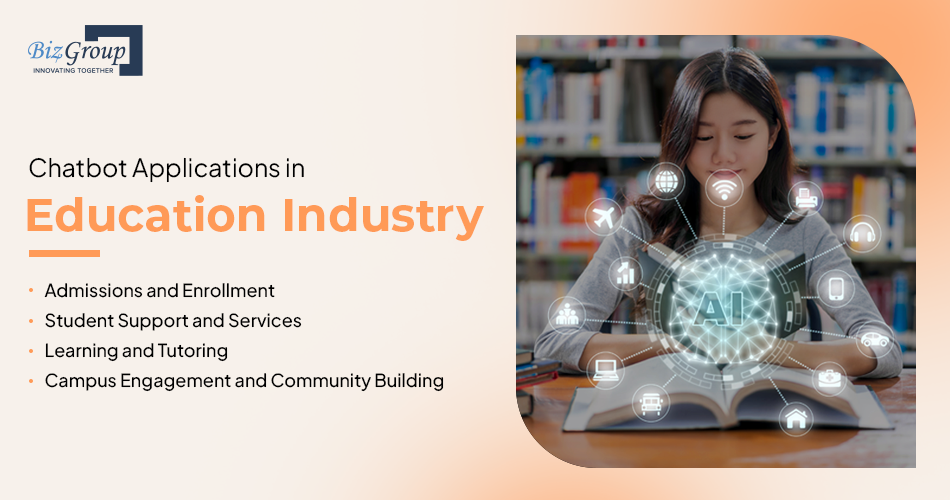
1. Admissions and Enrollment
The admissions adventure may be a driving force for incoming students. The use of chatbot in education can help a student to go through the whole recruitment process smoothly and the chatbot can answer questions such as course selection, application deadline, and the required documents on the spot. Better still is the fact that this is not only timesaving but also makes sure all the students who had informational gaps do not fall behind.
2. Student Support and Services
The use of chatbots in education can play a crucial role in assisting with administrative matters at any time of the day as well as academic questions requiring instant attention. These AI-powered chatbots function as an initial source of support by providing step-by-step instructions on navigating their course selection and registration processes, they also function as a friendly guide available anytime and anywhere.
3. Learning and Tutoring
AI can help students by delivering on-demand study material, homework, and tasks, and giving feedback on assignments, and they can do this at their unique pace and style. By merging the personalized approach through AI chatbots in education, we can target areas where there is a lack of comprehension and ensure that the students get exposure to matter outside the classroom.
4. Campus Engagement and Community Building
Chatbot in education contributes more than academics as it generates the feeling of community, which is one of the big factors. It can also help students and teachers by informing them about the upcoming on-campus club meetings, events, and any other extracurricular activities. This will further boost your participation in campus activities.
Apart from the chatbot in the educational system being a tool that can be used to improve the student experience, it also offers ways that can lead to the emergence of a unique and fully inclusive campus culture.

Chatbot Use Cases in the Education Industry
Innovative and impactful chatbot use cases in education sector expose a wide spectrum of possibilities. The application of chatbot in this section takes us to the realm of practical education, where the real usefulness and capability of the chatbot are demonstrated and revolution in the traditional learning systems is foreseen.
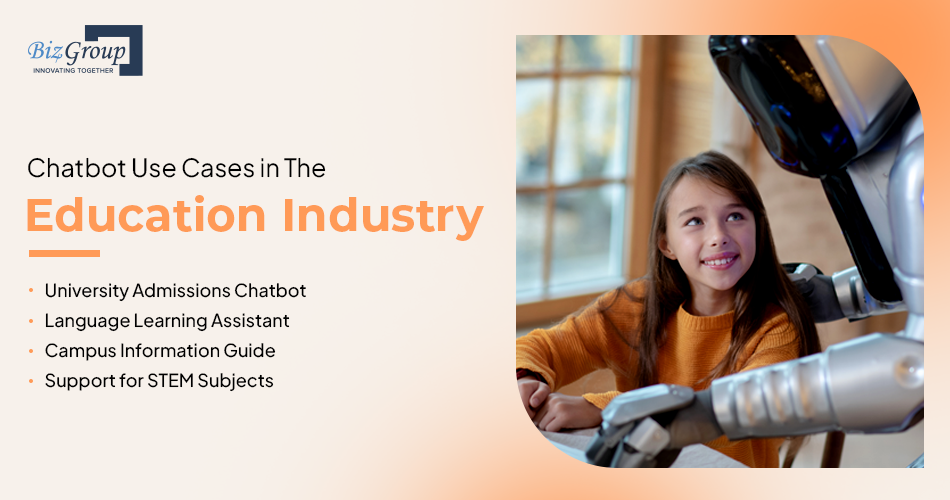
1. University Admissions Chatbot
Imagine a place where a university is giving such a role to an AI chatbot to settle its admissions inquiries. Such a chatbot is always available for students either on the university's website or social media pages, where it quickly responds to the students’ questions related to degree programs, admission deadlines, or financial aid opportunities.
A chatbot in education substantially reduces the workload of admissions staff members by automating responses in this manner because now these staff members can devote their time to other complex jobs and queries.
This chatbot use case in education not only relieves the admissions office staff of routine tasks but also contributes to the application process being faster and the delivery of correct information to applicants in real-time.
2. Language Learning Assistant
While language education is steadily taking place in the arena of e-learning tool creation, the chatbot seems to be a dominating player. Students can get a chatbot that is AI-based and has practice that goes in the direction of interactive conversations which is very hard to access outside the classroom.
The chatbot simulates real-life conversations and offers immediate feedback on the learners' correct pronunciation, as well as the grammar and vocabulary.
As a result, the learners improve in the language because they have a chance to practice with the smart system. What is an impact of such chatbots with feedback is that individual and adaptive language education technology is its breakthrough.
3. Campus Information Guide
Usually, on the larger campuses, the students do not know well how to go about during their first term as they are likely to go through a multitude of services and locations.
A campus chatbot can be a 24-hour, 7 days a week, all-in-one information guide to students, which they can use to find the center library's resources, cafeteria's hours, and event schedule, or even show them how the campus looks with maps.
4. Support for STEM Subjects
Chatbots are also becoming prevalent as educational features in STEM (Scientific, Technical, Engineering, and Math) fields. With the help of AI development services for educators.
Educators can incorporate a chatbot that is responsive, offering a student step-by-step guidance through complex equations coding exercises, or lab demonstrations. These tutelage systems can regardless of the student’s learning rate, provide hints when stuck and require inspiration in these essential topics.
The given set of use cases makes us aware of various ways chatbot applications in education can be brought to cut costs and improve learning. With AI technology tending to go from strength to strength, the list of innovative ways it can be used within the educational arena is a very long one.
Also Read: How Much Does It Cost to Build an AI Travel Planner App
Benefits of Chatbot in Education
AI chatbots are powerful tools that can be blended for the benefit of chatbots in education.
The use of AI in the educational industry is beyond the obvious implication of automation. These voice-based apps are critical in contributing to the creation of an educational environment that is more open, agile, and customized.
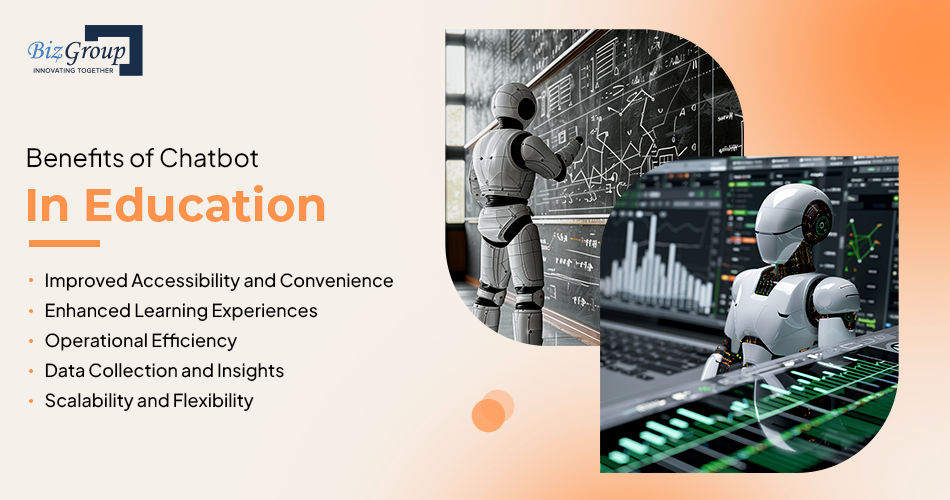
1. Improved Accessibility and Convenience
Accessibility is another noticeable advantage of chatbot utilization in education processes. Students, teachers, and support staff may make inquiries at any time of the day, for instance, by reaching out to the chatbot and obtaining the necessary information along with the solution to their concerns in the shortest delay possible.
A general availability that does not hinge on time constraints or possible human resource shortage is promoted by this 24/7 access.
2. Enhanced Learning Experiences
AI chatbot in education can take care of students' individual needs on an individual basis and facilitate the best approach for every learner. AI here assumes different types of learning styles and speeds.
3. Operational Efficiency
It is an automation that is tailored to students, taking away many of the regular queries and tasks, thus drastically minimizing the workload on the administrative and academic staff. Such efficiency yields the opportunity for the institutions to allocate their resources wisely through key strategic programs and minimal waste spending on education quality.
Chatbots can also fall into the category of operational benefits as they are able to handle unlimited queries at the same time with the help of computers, eliminating the need for new staff members.
4. Data Collection and Insights
AI chatbots not only act as conduits for information in education, but they can also equally help in data mining about students' level of activity eagerness as well as the type of learning. The data can give information about students, courses, etc. which creates an understanding and helps recognize the changes that can be made for the better.
By employing these strategies, educational institutions could take the right call about which strategies are effective in shaping curriculum and providing student services such as engaging students in learning and better results.
5. Scalability and Flexibility
AI chatbots for education are scalable, they are growing and adapting to provide the needed capacity even as the education institutions are evolving. These inventions will further help the job if you decide to widen the course offerings, enroll more students, or adapt the teaching methodology to the newest requirements. The bots can be easily updated and scaled to fit any implementation task, thus ensuring that the educational services always remain up-to-date and responsive.
Integration of chatbots into educational designs through the services of AI development and generative AI companies is a way of progressing the level of education. The inherent advantages of chatbots are illustrated by such a prospect, the next step is to develop an adaptable, efficient, and personalized educational environment.

Development of Educational Chatbots
Building an educational chabot is a process that starts with establishing learn-specific targets. Developers and educators jointly establish the precise learning outcomes that the chatbot aims to accomplish, whether these are becoming better in language, mathematics tutoring, or getting support in science majors. We consider the goals of our program as properly linked with the school curriculum and educational aims.
The implementation of AI in education can be both productive and fascinating, so you need to design it with strategy and know the customers before taking further steps towards its development.
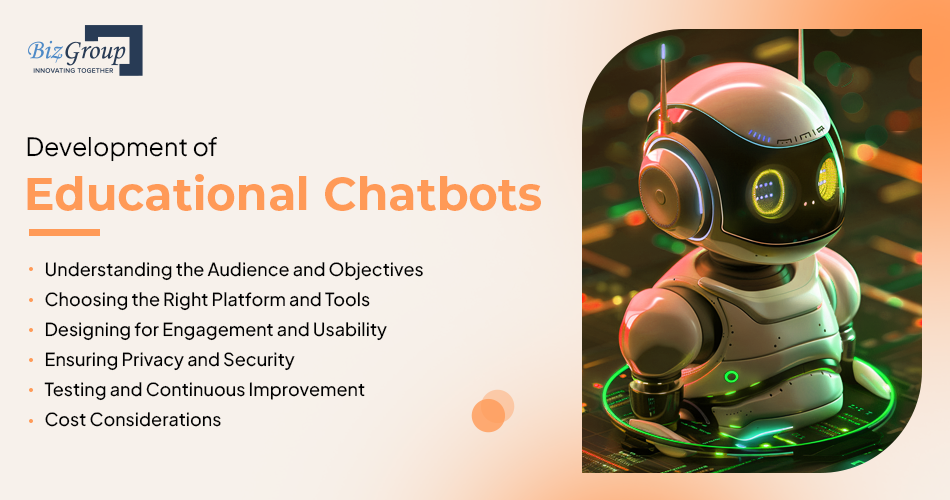
1. Understanding the Audience and Objectives
The starting point of AI chatbots in the education industry is to determine goals and define the target audience. Whether the chatbot in education is intended to be used by students, administrators, or faculty members, it will have a significant impact on its appearance and content. Goals can mandate creating 24/7 student support, providing learning opportunities, or just improving opportunities, or just improvement of the workflow processes. It is vital to be clear about what target elements you want the chatbot to have to make it meet the demands of the chatbot users.
2. Choosing the Right Platform and Tools
You should select the right platform and tools while developing a chatbot. This choice will hang on the purposes set, the colleges that the chatbot is going to be used for, and the complexity of technical settings that the educational institution has. The options range from enjoying the benefits of platforms extended by generative AI development firms to programming a chatbot by yourself using an AI development service. The platform should cater to all those requirements concerning scalability, interface integration, and handling NL processing and thus portray qualities of human interaction.
3. Designing for Engagement and Usability
The well-built chatbot must be accessible and compelling to the users. The design must concentrate on easy navigation, well-returned answers, and natural language close to the mode by which the faculty speaks. Realizing an interactive orientation by using quizzes, polls, and multimedia helps to engage the audiences more and entice them into an active dialogue.
4. Ensuring Privacy and Security
Privacy and protection are of great importance not only in the educational sector but also in data and sometimes so personal and sensitive information is continuously being exchanged thus this makes security imperative. Developers will have to ensure that data remains secure with the help of potential measures, for instance, data encryption and adherence to privacy legislation, that will save user’s information. Disclosing data utilization and providing users’ consent are paramount importance aspects in establishing trust.
5. Testing and Continuous Improvement
Collecting feedback from people and the detailed analysis of Chatbot interactions help us find the points of improvement after deployment. Frequent monitoring and periodic updates of major duties of teachers so the chatbot is always relevant and efficient in education.
6. Cost Considerations
The cost of developing an education chatbot may depend upon the complexity of the chatbot, the Nature of technology, and the degree to which its functionality. Partnering with an AI chatbot development services company will cost you less since you not only have access to a wide range of talents but also don’t have to hire an in-house team. Budgeting for maintenance and updating regularly should also be done so the bot will remain effective over time.
Creating and using chatbots in the educational sector includes technological, educational, and security aspects. As far as the issues mentioned above are concerned, educational facilities should pay special attention to them in order to use AI to upgrade learning as well as service efficiency.

Statistics Related to AI in the Education Sector
As per the Forbes Advisor, in a survey more than 98 percent of participants identified the need for AI in the education industry to improve and enhance the overall education experience.
As per the Forbes Advisor, in a survey, it was found that teachers prefer AI tools such as AI-powered educational games, adaptive learning platforms, and automated grading and feedback systems.
Also Read: Detailed Overview on AI in Fintech: Market Trends, Applications, Use Cases, Features, Benefits
Cost of Chatbot Implementation
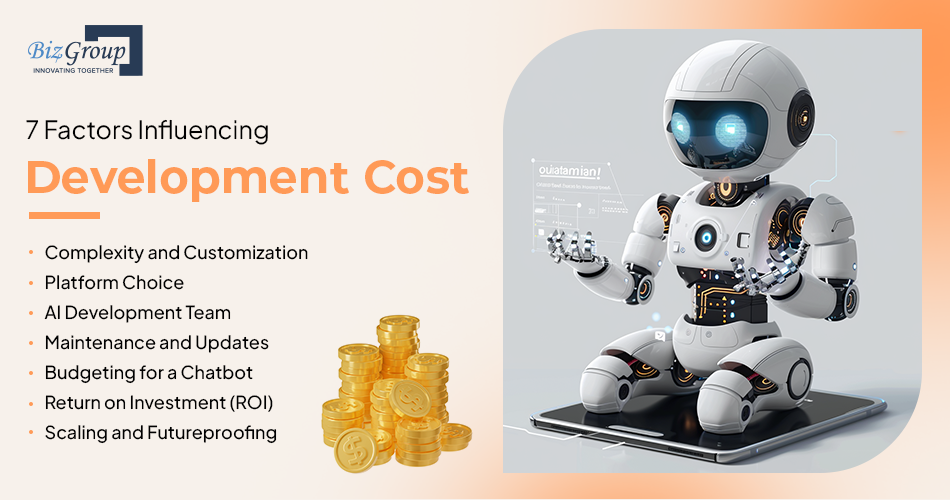
1. Complexity and Customization
With each added feature and further complexity, the development cost goes up. The provision of complex features including natural language processing, information systems integration, and personalized instructions necessitate more complex programming and validation.
2. Platform Choice
An independent or white-label solution can be used for a custom approach to determine the paychecks or salary. White label chatbot solutions are cheaper in terms of capital expenditure as you don't have to build them from scratch. However, the long-terms cost goes higher as you pay a hefty amount every month which accumulates to a very high number than the custom chatbot development cost
3. AI Development Team
Teaming up with a generative AI development company and partnering with an enterprise AI chatbot solution provider can help in the price as well. The providers not only supply technical support for fast development but also for a cost. Selecting the right partner is as important as investing appropriately and efficiently to obtain a synergy of cost and quality.
4. Maintenance and Updates
In the case of ongoing maintenance, i.e. software updates, security measures, and content utility, the total cost is an evident factor. Budgeting for continual improvement is of crucial importance in maintaining the bot’s relevance and efficacy.
5. Budgeting for a Chatbot
Initial Investment vs. Ongoing Costs: Distinction should be made between the time of investment for recurring spending during operation and lifecycle costs. A budget should cover these two, hence, an exact budget must be allocated to mitigate unexpected expenses.
6. Return on Investment (ROI)
Assess the possible ROI value and use this for decision-making whether the cost for a chatbot is justifiable. Resources output from own personnel costs decrease, greater student satisfaction and conformity indices, and better academic achievement can prevail over laboriously spent on cost processes.
7. Scaling and Futureproofing
Wise budgeting for the future is a point. With the needs of the institution being more complex, the chatbot of the institution may require getting an update or enlargement. Ahead of the schedule, it is hoped to consider these needs and bake them into their budget, keeping the chatbot a useful tool.
Also Read: Generative AI Wealth Management Development: A Complete Guide
Cost-Saving Strategies
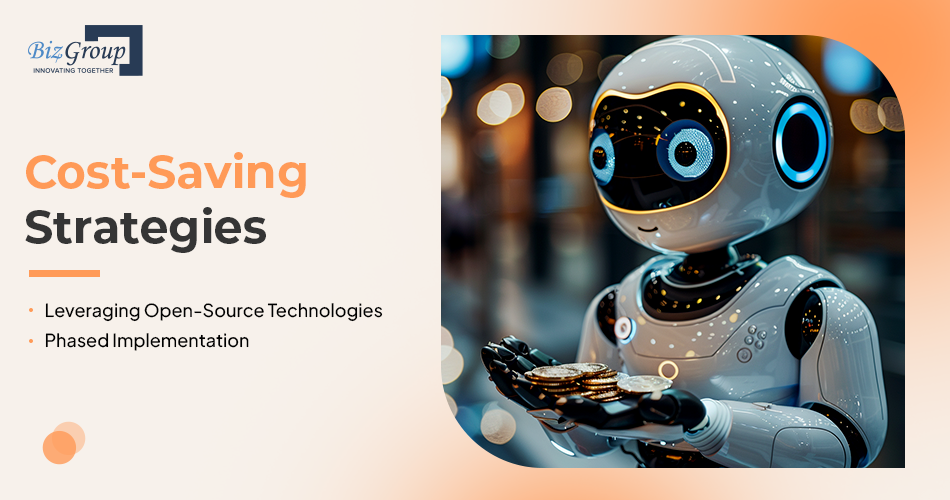
1. Leveraging Open-Source Technologies
Some open-source frameworks and tools can be utilized to decrease development prices. These materials may be an initial source for those institutions that have hands-on technical resource availability.
2. Phased Implementation
The leadership team is comprised of academic, scientific, and business innovators. Beginning with a minimum viable product and accumulating features based on feedback and financing can disburse cash flow over a longer time.

Conclusion
The integration of chatbot in education sector is a huge step towards modernizing and personalizing the learning system. These roles of chatbots vary from simplifying administrative procedures to engaging and improving students' learning experiences and outcomes. The features explored here are just a few of the potential scenarios for such AI-powered tools to entirely change educational practices.
Now, it's a perfect time for us to acknowledge that, just as the era in which technology in education changes, the road hasn't ended there yet. All the time, innovation, feedback, and evolution are the main things in the way of chatbots for education to be as significant as possible. These institutions that use AI study development services and e-learning development systems will be more likely to fulfill the expectations of their pupils and staff according to the changing needs.
The education of tomorrow has already made its way, and it sounds chatty. AI chatbots will not only improve the quality of education but will also make the process more engaging for the learners and be inclusive by being available to all users. Educational establishment by technology, which is indefinitely large, is starting through bots where they became only the beginning. We have both the privilege and the opportunity to make speculations about the future; in the coming years, AI will lead the transformation of the educational system for the better, both by addition and enrichment.
 info@biz4group.com
info@biz4group.com 
















